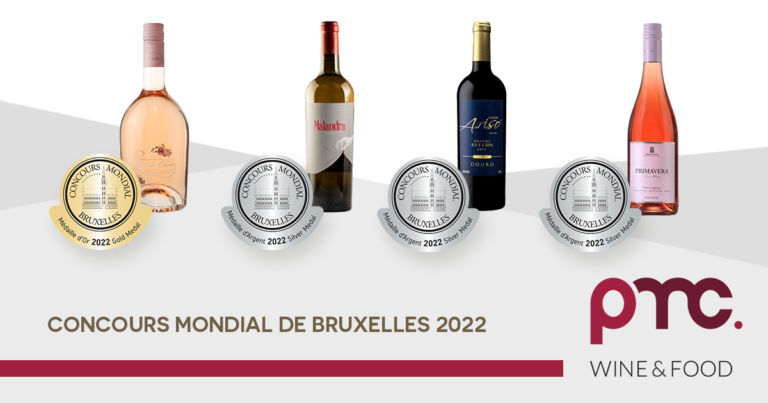Port Wine: It is known worldwide, but few people understand the differences between Port wines, or even what differentiates Port from a still wine. Find out the origin of each type of Port Wine.
Starting simply, Port wine is a liqueur wine originating in the Demarcated Region of the Douro, where tradition has a great influence on its winemaking process. Its main characteristics are the cessation of fermentation by the addition of brandy and its aging process and time, which depends on the type of port we want to obtain.
Ruby Port
The Porto Ruby wines are characterized by their red color (ruby), which can be more or less intense, and their aroma, bold and full of fresh red fruits. Its aging is carried out mainly in the bottle, and some deposit may appear in it.
Within this category we can have Ruby Reserva, made from the selection of the best Port wines from each house, full-bodied and astringent, with a fresh and seductive aroma of red fruits. It is a very versatile wine, and can be consumed as an aperitif, with soft cheeses (brie or Camembert) or as a dessert, with cheese mousses, dark chocolate or desserts with coffee.
Moving up the quality scale, we find the Porto LBV (Late Bottled Vintage). LBV is made with grapes from a single year, when their quality allows it. It is bottled after an aging period of four to six years and, once on the shelf of a wine cellar or supermarket, it is generally ready to be consumed. Otherwise, this indication comes on the wine label. They are more full-bodied and astringent wines than Ruby Reserva and are perfectly matched with medium-intensity soft cheeses or with a dessert rich in dark chocolate or coffee.
At the top of this scale we have Vintage Port, the highest rating a Port wine can have. Only awarded in years of exceptional harvests, a Vintage Port is made from grapes from just one harvest and is bottled two to three years after the harvest, with aging in the bottle for 10 to 50 years as one of its main characteristics. Over the years, the characteristics of a Vintage Port fade, giving rise to some more reddish tones and more ripe fruit. Subsequently, we can obtain a wine with a more amber tone, with deposit and more complex. The fruit that once predominated now becomes lighter and more subtle, giving way to other aromas characteristic of an aged vintage such as coffee, cigars or spices such as cinnamon or pepper.
A new Vintage Port combines with the marked aromas and flavors of a Queijo da Serra or Azeitão cheese, while an older Vintage Port combines very well with a Roquefort or Gorgonzola cheese. In terms of desserts, you can choose the Apple Strudel or the Tarte Tatin.
Port Tawny
The Tawny Ports have the same vinification process as the Ruby ones, so it is in their aging that the difference lies. Tawny wines age in casks or vats, thus presenting a more amber color, aromas of nuts, wood, coffee or honey. They are less full-bodied and sweeter wines, and when bottled they are ready to be consumed. Porto Tawny goes very well with typical Portuguese egg desserts, such as rice pudding, or some French toast at Christmas.
Within this category of Port wines, we start with Tawny and Tawny Reserva. Both wines follow the same vinification process, they just differ in the time of aging in wood: a Tawny ages, on average, for 3 years while a Tawny Reserva takes between 6 and 7 years. The golden color and aromas from the wood are present in both, with greater complexity and evolution in color and aromas in the Reserva.
Tawny with age indication (10 years, 20 years, 30 years or 40 years) are wines that in their constitution have batches of several years. That is, the average age of the grapes used is 10, 20, 30 or 40 years, depending on the case. With age and contact with wood and air, the wines lose characteristics such as their reddish color, fruity aroma and freshness, turning into an amber-coloured aged wine. The aromas are marked by wood and oxygenation and resemble vanilla, nuts, honey or coffee.
Porto Colheita are exceptional wines, coming from just one harvest, usually identified with the year on the bottle. They always age in wood for a minimum period of seven years. Depending on the aging period, as in Tawny with an indication of age, Porto Colheita acquires characteristic aromas of the oxidation process, being increasingly evident as the wine ages.
White Port
White Port is typically a young and fruity wine, categorized according to its aging time and sweetness. They are, therefore, dry, semi-dry and sweet Port wines (Lágrima) and/with indication of age (10, 20 years). This type of wine can be consumed fresh as an aperitif or to accompany a board of cured cheeses or melon with ham, for example.
Rosé Port
Rosé Port wine is a recent innovation in this traditional world of Port wine. Its pink hue is acquired like that of any other rosé, through the contact of the grapes’ skin with the must for a short period. The more color you want, the longer the contact time is needed. They are young wines with a very exuberant aroma of red fruits with strawberry and raspberry, in the mouth they are delicate and quite smooth. It is a very versatile wine, to be drunk fresh or in cocktails.



